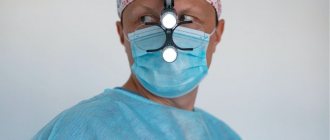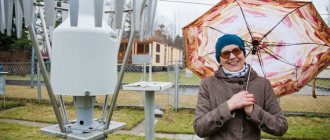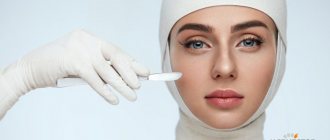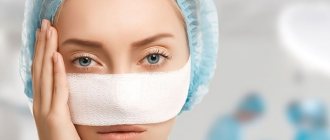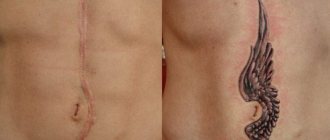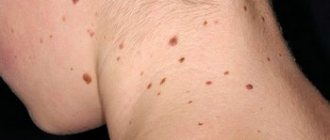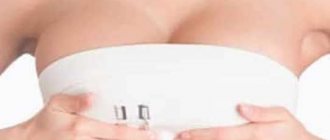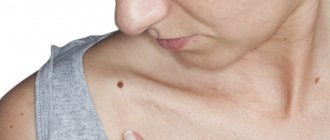About choice, naturalness and happiness. Interview with plastic surgeon Vyacheslav Arbatov
Vyacheslav Arbatov
Vyacheslav Arbatov
plastic surgeon at the Galaktika aesthetic medicine clinic
plastic surgeon at the Galaktika aesthetic medicine clinic
Aesthetic Medicine Clinic "Galaktika"
Everyone seems to know about plastic surgery these days. However, when you face the problem in detail, it turns out that much of this knowledge is insufficient, and many are completely incorrect. So the first question is: are there a lot of myths about plastic surgery?
Yes, there are quite a few of them, and the main one is that the plastic surgeon will do everything you pay for. If this is a good plastic surgeon, he will never in his life perform an operation on a young girl who decided that she needed a facelift, for example, and decided without reason. Because it’s one thing when very young people suddenly want to surgically remove facial wrinkles, and another thing when they have a congenital genetic problem, for example, eyelids drooping very low.
Plastic surgery is not a toy. It just seems like there are a lot of clinics and doctors, and everything is easy and simple. We are talking about an operation, an intervention in the structure of the body.
instagram: @viacheslav_arbatov
We've heard about some kind of “seamless surgery”.
instagram: @viacheslav_arbatov
This is another myth, and I would even call it in harsher words. It arose due to the fact that there is not entirely conscientious advertising of surgical intervention, which supposedly can be done without stitches. And a sutureless surgeon is like a dumb speech therapist! If you see something like “only with us, seamless technology to fix anything,” know that they are trying to deceive you. Because later, when the operation is already done, and you, naturally, discover that you have stitches and start asking questions, only then will they explain to you that “yes, there were incisions after all, and there are stitches, they’re just very small.” There can be no seamless surgery, because it is always an incision, a suture, and proper healing. When people are promised something different, they are, to put it mildly, misled.
What about implants bursting on a plane?
A modern breast implant can burst only in one case - if the doctor damaged it during installation. When breast surgery is performed, the incision must be of a strictly defined size. If the doctor wants to make a minimal incision so that later it seems like there is almost nothing to stitch up, then during the operation the implant will almost inevitably be damaged. It will burst either immediately, or a microcrack will form there, which will subsequently lead to rupture. If the implant is inserted with high quality, if everything is done in compliance with technology and rules, there is no risk of negative consequences. In general, a plastic surgeon must ensure that everything is as it should be, without improvisation or special innovation.
Plastic surgery is not a toy. It just seems like there are a lot of clinics and doctors, and everything is easy and simple. We are talking about an operation, an intervention in the structure of the body.
It's interesting that you say this because the profession of a plastic surgeon is considered almost creative. Associations are usually with a sculptor, an artist...
This is all good, of course, and there is some truth here. But let me tell you about my first patient.
Before I started operating myself, I spent a long time as an assistant to a more experienced doctor. And now my first independent operation - a girl came for mammoplasty. Of course, I was worried, but I considered myself psychologically and professionally ready to work independently for the first time. I did everything completely calmly and confidently. The girl was happy and couldn’t wait to be discharged soon. I was also pleased, I was even glad: the swelling and bruises were small, everything was healing well. And, instead of removing the stitches after two weeks, as expected, in the wake of some euphoria, he removed them on the fifth day. Well, it's still going great! Then the girl comes for an examination and says: “It seems that my seam has come apart, and now I see that even the edge of the implant is sticking out.” Fortunately, nothing serious simply happened: no complications, no inflammation. I changed everything and remembered for the rest of my life that the surgical table is not a place for improvisation. Here you need to perform time-tested things with high quality and precision.
How did you even choose your specialization?
Accidentally. I graduated from the Military Medical Academy named after. Kirov and never planned anything like this in my life. I met Artur Vladimirovich Rybakin, who later became my friend. He was already working in plastic surgery. He invited me to be an assistant, and I agreed. It was 1998, we started working together at the clinic on Gorokhovaya. It was a very difficult period in my life, because we were young doctors, no one knew us. However, we did our job well. I always really liked my profession - and not because of the money, because it came much later. It made me happy that we could quickly make someone's life better.
instagram: @viacheslav_arbatov
The surgical table is not a place for improvisation. Here you need to perform time-tested things with high quality and precision.
You perform rhinoplasty - and this is the first most popular operation for me - you remove the plaster, carry out therapy and see that the person is really happy. You see the result of your work here and now. It's a magical feeling: you're doing something right. It inspires you and inspires you. Moreover, at that time there were not many people doing this; specialists, unlike today, were rare. And it was nice to be able to do something that few people can do. Well, more than 20 years have passed since then, our clinic is known in Moscow and St. Petersburg, and I have never regretted making such a choice.
They say that Russian patients are more demanding, and Russian plastic surgery is at a higher level than in the USA, for example. This is true?
I would not give global estimates, because each country has its own market size, and, as a rule, the exact information on this matter is all closed. It is known that in the USA and Brazil there are an order of magnitude more operations performed than in Russia. If we take European countries, then they have less demand for plastic surgery. If we are talking only about our country, without comparisons, I would say that our plastic surgery is at a high level, because it rests primarily on the reputation of doctors.
instagram: @viacheslav_arbatov
Russian clients are really demanding, and that's normal. Plastic surgery is a very delicate area of intervention; it is difficult to please. So if the doctor’s work is highly appreciated by one person, another, a third, a twentieth, then after some time the doctor develops his own fame, which works for him, for the clinic. A clinic that does not have doctors with good practice and good patient reviews simply cannot work. The only thing that can keep you at the top of demand and, accordingly, in the profession in general is high-quality surgery. And ethics, of course: I, for example, will never promise a patient to do something that I absolutely cannot do. Either do it well, or don’t bother, because yes, Russian women are more demanding of many nuances than European women.
Time Out about professions and professionals:
“Meteorologists in the state were entitled to a carbine.” Who makes our weather and how?
“Meteorologists in the state were entitled to a carbine.” Who makes our weather and how?
“Why are we attacking trees”: who are arborists and how they risk their lives every day
“Why are we attacking trees”: who are arborists and how they risk their lives every day
“Our task is to treat and help”: interviews with Moscow veterinarians
“Our task is to treat and help”: interviews with Moscow veterinarians
How do patients perceive their new look?
You know, mostly calm. This is not a movie where the bandages were removed, and there was no swelling or stitches underneath. As a rule, people begin to like themselves a lot after some time, a month or more. By that time, the swelling subsides, the bruises disappear, and the person understands what his face or body will be like. He begins to communicate with colleagues, with friends, they give him compliments... In general, when they come to me a month later, they look much more satisfied. And the first reaction is always cautious.
I would say that our plastic surgery is at a high level, because it rests primarily on the reputation of doctors. Russian clients are really demanding, and that's normal.
And you? It is clear that you have an understanding of the result based on experience, but here it is: you removed a person’s cast, removed the stitches... Are there any emotions?
It happens differently. On the one hand, based on years of work, I really understand the result in advance. If everything is fine, I react absolutely calmly - that’s how it should be. On the other hand, I have not only primary operations. Sometimes I have to correct the work of other surgeons. This is very difficult, because, firstly, the operations were often performed not by novices, but by respected doctors, professionals. You always take on a job with the thought: “They couldn’t do it right, and I won’t be able to do it.” The main thing here is to be honest with the patient: if I clearly see that my doubts are more than justified, I voice them and warn, for example, that after two rhinoplasties I will not be able to make the tip of my nose higher, but I can make it narrower, smoother and better breathing. Then the person makes his own decision. And secondly, it is always more difficult to redo something than to create something from scratch. And here I am, of course, very happy when I succeeded and did better. Because if someone couldn’t help, didn’t cope, but you managed, it’s always nice.
Do men go to a plastic surgeon?
Yes of course. In general, the ratio of women to men is approximately 95% to 5%. Of course, every case is different, and patients come with different mindsets. Most are absolutely ready and understand what they want to do and why. There are also those who are very worried: here we help, of course, we give additional consultation before the operation. We can cancel or postpone everything altogether, so as not to impose anything that a person is not ready for. It won't lead to anything good anyway.
instagram: @viacheslav_arbatov
Is it possible to invite the patient to love himself in his natural state? After all, plastic surgery is the last resort.
Listen, this is banal and not entirely fair. Naturalness is great, but then you don’t have to cut your hair or get a manicure. You see, it’s one thing when a person lives in peace with himself. But it’s a completely different story when he suffers all his life from the fact that his nose is too big, or his ears protrude too much, or the skin of his stomach hangs down, and nothing can be done about it using conservative methods! This used to be a problem. Now everything can be fixed. So why, one might ask, tell a person this eternal “live as you are,” when the same rhinoplasty really relieves suffering, and not only related to appearance - after all, very often there are breathing problems.
instagram: @viacheslav_arbatov
I believe that the level of development of modern plastic surgery gives a person a normal choice, gives him freedom. Many of my patients begin to live in harmony with themselves, become more self-confident, happier. Therefore, if a person has some really physical problem, we will solve it. If this is a psychological problem, but outwardly he is fine, I will dissuade him and refuse the operation, and this is what most of my colleagues do. Twenty percent of patients who come for consultations leave with nothing, simply because I will not operate on them and will always find a way to explain why they do not need it.
If the patient’s problem is psychological, but outwardly everything is fine, I will dissuade him and refuse surgery, and this is what most of my colleagues do.
So have you had such cases?
Certainly. In our clinic we have from 15 to 50 consultations every week, and we are constantly faced with this. I have already told you about the myth that a plastic surgeon will perform an operation on anyone. I repeat once again: we will not put just any person on the table. This will not make him happy, it will not solve any of his problems. Such a patient will remain dissatisfied with himself even after the most ideal operation and will place this blame on the doctor.
Let's talk a little more about the relationship between conservative and surgical methods in the beauty industry. Often operations are performed in order to get rid of age-related skin changes - but maybe it’s better to see a cosmetologist than a surgeon?
Of course, modern cosmetology is very strong, and many problems must be resolved there. If we are talking about age, then this is injection cosmetology associated with the introduction of any fillers. With age, what happens to the face: fat and water leave, the skin loses moisture, and wrinkles form. Cosmetologists can replenish moisture and add a certain volume. This helps a lot. But when age-related changes are already more significant, when muscle weakness appears, then there is no way to remove this except surgery, because the introduction of fillers in such circumstances can only worsen the situation and make the face heavier. In this case, surgical intervention makes sense, but within strict limits. Then proper cosmetic care and therapy.
instagram: @viacheslav_arbatov
How to care for problem skin
How to care for problem skin
Beauty after quarantine. First aid from a cosmetologist
Beauty after quarantine. First aid from a cosmetologist
Beauty delivered to your home
Beauty delivered to your home
This all naturally brings us to the question of how to choose a good plastic surgeon.
To begin with, look for a doctor based on his work. Look at Instagram profiles, websites of clinics and doctors. Find jobs that you enjoy. Next, read the reviews. Ideally, talk to friends and acquaintances who have already had surgery: firstly, they will, in principle, give you a lot of useful information, and secondly, they will be able to recommend a doctor. If possible, do not limit yourself to one doctor. Sign up for a consultation with three specialists, compare everything, weigh it, and make a conscious choice based on this. It is very important because you are trusting someone with your body.
We will not put just any person on the table. This will not make him happy, it will not solve any of his problems.
In addition, it is possible that this is not a one-time choice. Plastic surgery today has become quite firmly entrenched in the human life cycle. You can approach this differently, but I think it’s normal: a plastic surgeon can really correct features of appearance, which - let’s not be hypocritical - often make a person unhappy. If the patient consciously chose a doctor and received a good result, then in the future he can return to him if the need arises.
A professional learns throughout his life. Who do you study with?
instagram: @viacheslav_arbatov
First of all, my friend Arthur Rybakin. We grew up in the same city, are practically the same age, we have the same views on life, and for 22 years now we have been sharing the same operating rooms in St. Petersburg and Moscow. Of course, the formation of my professional foundations occurred as a result of communication with this person. As for the rest, I always try to go on internships and learn everything new that is in our specialty. Before the pandemic, I flew to France for a symposium on rhinoplasty - and in many ways it was a revolutionary event, a huge and fruitful exchange of experience with European colleagues.
If a young surgeon came to you and said he wanted to specialize in plastic surgery, what would you tell him?
That you will have to work a lot before you have a reputation as a good specialist and people will come to you. Therefore, the main thing is patience, calmness, thoroughness, and responsibility. Your work must be of high quality, always, no matter what. I would also advise you to choose “James Bond” for yourself - some doctor whom you want to be like in your work style, in temperament, maybe even in appearance. It's like in football: when a child starts playing, he has some kind of ideal, and often this is a coach, because the coach can do everything. It’s the same in surgery: since you don’t have your own handwriting yet, you just need to copy at first. And there is nothing reprehensible or bad about this. A successful person, before becoming successful, made many mistakes that you can avoid.
Introduction or brief historical overview
Everyone knows that humanity's historical obsession with beauty and the inexhaustible resource of surgical technology that faithfully serves us today are based not least on the sinful vanity of the 16th century, when Europe was swept by an epidemic of syphilis. It was then that Chirurgiadecoratoria (Aesthetic Surgery) appeared, trying to restore sunken noses so that the indecent disease would not be so obvious to others.
Surgeon Gaspare Tagliacozzi from the University of Bologna was the first to see the connection between a physical defect (nose) and the self-perception of such patients (and told it to the world in pictures: in 1597, in the illustrated treatise “De Curturum Chirurgia per insitionem” - a technique for reconstructing a nose lost as a result of syphilis , using skin flap transplantation). I would call this period the period of the greatest sexual tragedy, when the suffering, troubles and inconveniences caused by the disease, and subsequently complete rejection by society, significantly outweighed the instant bursts of pleasure on the scales of happiness. Tagliacozzi invented a method (not worthy of abstinence) with which it was possible to “grow” a new nose in place of the lost one.
Today, looking through punctual notes + pictures from surgical atlases of that time (I can’t help thinking that they remind me of surgical comics), you understand how courage, patience (both on the part of surgeons and patients) and drama permeated the entire path that I have had rhinoplasty since then. Strategically, it developed in two different directions - correction of external deformations and restoration of internal structures of the nose (septum, turbinates) to ensure normal breathing functions.
The surgeon J.F. Dieffenbach (1792-1847) developed provisions sufficient to become the basis, the basis of all modern rhinoplasty. He proposed and described operations for noses with a wide dorsum, long noses, and noses with an osteocartilaginous hump, using external, median or lateral approaches.
However, a little later, otolaryngologist J. O. Roe (1849-1915), who had a greater understanding of the values of aesthetics and the absence of scars, considered external incisions for rhinoplasty to be old-fashioned and suggested the use of endonasal (internal) ones.
R.V. Veer (1838-1927), a surgeon with an innovative approach, was the first to perform a lateral osteotomy, which has not become a relic today, as well as partial resection of the wings of the nose to narrow them, which became a real breakthrough in rhinoplastic creativity.
Surgeon J. Joseph "designer" experimented with wing cartilage. He introduced a number of new tools, demonstrating a better understanding of surgical comfort and its role in achieving better results.
Goals of rhinoplasty
Let's leave historical irony behind and move into the modern world of rhinoplasty or nose shape correction, which is one of the most popular operations in plastic surgery. The nose can be reduced, enlarged (using your own cartilage or special implants), change the angles - nasolabial (between the columella and upper lip) and profile (between the nasal bones and forehead), straighten in the front, make the bridge of the nose narrower, etc., but the most common requests from patients are:
- raise and (or) rotate the tip of the nose, shorten it and make it narrower in front (sometimes with partial resection of the wings of the nose);
- remove the osteochondral hump and lower the projection of the nasal dorsum, respectively making the nasal dorsum straight or slightly concave in profile and aligned to the front (for asymmetry associated either with a deformation of the nasal septum or after a nasal injury).
An aesthetically harmonious appearance of the nose must correspond to the general proportions of the face and body and is unique in each anthropometric case (racial characteristics, state of occlusion, etc.). The favorites of “nasal” beauty are those with “Scandinavian genetics” with straight backs and narrow tips. In our practice, it is reduction rhinoplasty that occupies a leading position. In preparation for surgery and to assess future changes, computer modeling (usually in a profile projection) of the nose is performed, which helps both the patient and the surgeon to imagine, firstly, the desired and, secondly, the surgically possible variant of changes. After that, the surgeon is required to do only one thing - to transfer to the operating room and implement in the surgical technique the amazing world of changes in the nose that emerged during the discussion and depicted during modeling.
Indications for surgery
The main reason patients turn to plastic surgery clinics is to reduce the entire nose or its individual parts. To understand the scope of the upcoming rhinoplasty, the surgeon evaluates both the profile projection and the front view of the nose (in profile, the subnasal and profile angles are well visualized and conveniently interpreted, assessing which one can judge the excess length of the nose, which means one can quite accurately predict the degree of shortening of the nose). To change the forward projection (fas), narrowing of the tip and dorsum of the nose, as well as shortening of the columellar part of the tip, is usually performed. The degree of narrowing should be consistent with the aesthetic views of both the patient and the doctor, and generally the width of the tip of the nose should be twice (or so) the width of the bridge of the nose, and the nostrils should not project significantly beyond the lines descending vertically from the inner corners of the eyes.
Key stages of reduction rhinoplasty technique
1.
Frenuloplasty
(plasty of the frenulum of the upper lip or a method of lengthening it).
Frenuloplasty is most often performed using the VY method of plastic surgery of the mucous membrane of the upper lip with subperiosteal separation of the muscle that depresses the ala of the nose. The goal of frenuloplasty is to eliminate the vector effect on the tip of the nose, which is especially noticeable when the muscle group in the area of the upper and lower lips is reduced. For example, when smiling or during a conversation in such patients, the tip of the nose moves up and down, which gives individual piquancy to its owners, but for rhinoplasty it is important that this vector stops influencing the tip of the nose and does not interfere with the surgeon’s “rotation” of it to an aesthetically desired position .
2.
Septoplasty a
(plasty of the septal cartilage in case of its deviation).
In the presence of deviation (curvature) of the nasal septum, partial gentle resection of the curved sections of the cartilaginous and bone parts of the septum is most often performed. Care must be taken not to remove the septal cartilage too high (close to the skin) - this can lead to unpredictable changes in the nasal bridge in the future. If necessary, the surgeon performs conchotomy or coagulation of the nasal turbinates. The presence of a deviated nasal septum can cause not only difficulty breathing, but also deviation (deviation along the vertical axis of the nasal dorsum to the right or left), for the elimination of which septoplasty is a necessary step.
3.
Shortening the tip of the nose
(in most rhinoplasties, a particularly important point when shortening the tip of the nose is its rotation or turning counterclockwise to change the nasolabial angle, which should be equal to 105 * -110 *).
Nasal shortening aims to increase the nasolabial angle and is achieved through a bilateral full transfection incision. In order for the tip of the nose to simply become higher, it is necessary to excise a uniform strip of the distal edge of the septal cartilage. If it is necessary for it not only to become higher, but to turn upward or “rotate” in the upper part, it is necessary to additionally excise a small section of the septal cartilage precisely in the upper part of the tip of the nose.
4.
Narrowing of the alar cartilages
and, if necessary, lowering the projection of the tip of the nose.
Through marginal access on the right and left, the wing cartilages are isolated using the luxation (dislocation) method. A number of surgeons also use intercartilaginous incisions to facilitate luxation of the alar cartilages. The alar cartilage is changed by removing the cephalad (upper) sections of the lateral crura, and, if necessary, reducing the projection of the tip of the nose by resection of sections of the alar cartilage from the area of the arches. If this is not enough, then a transverse strip is excised from the lateral crura of the alar cartilages closer to the base of the nasal wing and away from the arches. After assessing the symmetry of the remaining parts of the lateral crura, they are stitched with catgut 5.0. The tip of the nose is formed.
5.
After removal of the periosteum and perichondrium,
resection of the osteochondral hump with correction of the septal angle
.
First, the bony part of the hump is removed with a direct osteotome, then the cartilaginous part is sharply removed, followed by processing of the irregularities with a rasp. The transition zone of the nasal dorsum to the tip, the so-called septal angle, is treated separately; most often, a small section of triangular-shaped cartilage is resected to prevent the appearance of a hump in the supratype area.
6.
Suturing the incisions
and, after assessing the width of the nostrils, if necessary, partial resection of the wings of the nose can be performed (Weer operation).
After obtaining a satisfactory aesthetic result of the patient's profile, all incisions are sutured with 5.0 catgut. To correct the width of the nostrils, partial resection of the wings of the nose is performed by excision of the skin and soft tissues from their base with a 6.0 Prolene or 6.0 Monocryl suture.
7.
Narrowing of the nasal dorsum
using lateral osteotomy.
Through separate incisions-punctures in the vestibule of the nose at the base of the pyriform opening, a lateral osteotomy is performed (it is desirable that the osteotomy line is clean and as low as possible) with osteotomes with the right and left curvature to the inner corners of the eyes, followed by infracture (inward fracture) and wedging of bone fragments in new position. Lateral osteotomy is performed on both sides to achieve mobility of the nasal bones, and then to reposition them (new position) to bring them closer together.
8.
Insertion of turundas
into the nasal passages and application of a multilayer bandage made of plaster and plaster.
Turundas introduced after rhinoplasty (gauze strips soaked in a special oil that prevents drying, which is especially important when they are removed the next day) exert mechanical pressure on the vessels and are placed to prevent nosebleeds in the early postoperative period. And they also help the surgeon put on an aesthetically correct plaster cast, pressing from the inside.
Open and closed (endonasal) approaches in rhinoplasty
N
External approaches, if we consider them in a historical context, have gone through more than two centuries from skin grafting from one of the arms (the arm was “fixed” to the head with a bandage, and the patient had to wait until the skin took root) to “virtually invisible” seagulls" (most often the external access is located in the lower part of the columella and is shaped like a gull's wing). External incisions have one very significant advantage: they allow the surgeon to widely expose almost all structures of the nose and work with them ad visum (under visual control). Disadvantages: contraction of the subcutaneous scar is not always predictable (it often looks retracted and deforms the collumela), more pronounced swelling in the postoperative period (most likely due to greater trauma to the vessels supplying the tip of the nose), and most importantly, it is noticeable!
N
External approaches have a right to exist and are advisable for severe post-traumatic (or when it is impossible to perform endonasal approaches, for example, after thermal damage to facial tissues) deformities of the nose.
IN
Internal approaches are used in rhinoplasty to correct all parts of the nose. We have already mentioned them, but let's try to understand them again:
1.
Transfection approach
- passes between the lower edge of the septal cartilage and the upper edge of the medial crura of the alar cartilages. It is used to shorten and rotate the tip of the nose with resection of the distal part of the septal cartilage and to shorten the collumella when it is sagging.
2.
Regional access
(also called anterior endonasal) - located almost immediately behind the edge of the nostril (2-3 mm) and along it. It is needed for isolating the alar cartilages and working with them (most often used to narrow the tip of the nose in the front and lower the projection of the tip of the nose; many surgeons also use it to “exit” to the dorsum of the nose, avoiding intercartilaginous and transcartilaginous approaches).
3.
Transcartilaginous
(middle endonal) and intercartilaginous (posterior endonal) approaches are carried out in the middle or along the upper edge of the lateral crura of the wing cartilages. They make it easy to correct both the cartilaginous and bony parts of the dorsum of the nose, as well as after the so-called. “luxation” to perform the necessary manipulations with the wing cartilages.
Rehabilitation
The plaster cast is worn for 7-10 days. It helps control post-operative swelling and also keeps the nasal bones in their new position and prevents them from moving apart. Cold (most often ice or special glasses) must be used in such a way that it does not dissolve the plaster cast (by direct contact of water with the plaster), so use it separately on the right and left. It makes sense to do this 3-4 days after rhinoplasty for 10-15 minutes 3-4 times a day. Usually our patients receive a special postoperative kit, which includes any of the kernel oils - peach or almond, apricot (oil solutions lubricate the nasal mucosa well, facilitate the separation of crusts, which form especially intensively in dry air conditions, so it is recommended to humidify the air in which the patient is located using humidifiers or simply by placing a container of water on low heat, adding a couple of drops of eucalyptus tincture) and a rinsing solution, for example, aquamaris.
Do not try to remove the “thread knots” lovingly tied by surgeons and do not cut them yourself - this can lead to suture divergence and then to severe scarring!
Physiotherapeutic procedures are needed to shorten the rehabilitation period by additionally influencing the rate of resolution of postoperative swelling, but cosmetologists-rehabilitators will better tell you about them.
Conclusion
Rhinoplasty is, of course, one of the most favorite operations for both surgeons and patients, reminding me of an ocean liner, upon boarding which you understand that you will have to swim for a long time and it is unlikely that you will be able to go ashore, but during the journey Exquisite dishes and many of your own discoveries await you.
To communicate with patients who have undergone rhinoplasty, come to our forum, Rhinoplasty
Nose job
Rhinoplasty is a surgical correction of the nose, which allows you to correct congenital or acquired defects, solve both aesthetic issues and problems with difficulty breathing caused by a violation of the structure of the nose.
Using the operation you can:
- remove the hump;
- reduce size, length or width;
- adjust the size and shape of the nostrils;
- change the shape and projection of the tip of the nose;
- correct a deviated nasal septum;
- eliminate deformation after injury.
The nose is, one might say, the central part of the face. With its change, the features change radically. Therefore, it is so important that the operation is performed by an experienced surgeon who will not only take into account the wishes of the patient, but also, relying on his professionalism, will make sure that the new form looks harmonious and aesthetically pleasing. Without compromising the main function of the nose - breathing.
At the Institute of Beauty on Arbat, operations are performed by plastic surgeons with extensive experience.
Types of rhinoplasty
- Primary
Rhinoplasty, which is performed for the first time. When modeling a new shape, the doctor is limited only by the individual anatomical features of the structure (unfortunately, it is simply impossible to radically change the size of the nose).
- Correctional
The cartilage tissue that makes up the tip of the nose is a very capricious and unpredictable structure. Even a highly qualified doctor does not always make it possible to predict the result with 100% accuracy. If the patient is not completely satisfied with the results, a slight correction is made. There is no need to be afraid of this. Moreover, the need for such an operation arises quite rarely.
- Repeated
This is no longer just a correction, but a second full-fledged operation, with the help of which the result of an incorrectly performed primary rhinoplasty is corrected or defects that arose due to violations during the rehabilitation period are eliminated.
It is much more difficult to carry out such a manipulation, because the changes already made significantly limit the capabilities of even a qualified surgeon.
To avoid such problems, you must initially very thoughtfully choose a specialist who will perform rhinoplasty, contact only specialized clinics with a reliable reputation, and strictly follow all the doctor’s post-operative recommendations.
Few plastic surgeons would risk correcting the mistakes of their irresponsible “colleagues.” However, the qualifications and experience of the specialists at the Clinic for Men’s and Women’s Health, as well as the use of the latest technologies, make it possible to help patients, even those who came to us with extremely unsatisfactory results of rhinoplasty performed in other clinics.
Open and closed rhinoplasty
Nose surgery is performed using two methods:
- Closed - all manipulations are carried out through the nasal passages, without cutting visible skin. This operation takes less time and leaves no visible scars, but not all types of correction can be performed using this method.
- Open - first an incision is made along the columella (the area between the nasal passages), the skin fold is turned towards the bridge of the nose and direct access to the cartilaginous and bone parts of the nose is opened. After open rhinoplasty, a small scar remains, so this method is not recommended if the patient has a tendency to form keloid scars. However, with complex nose correction, such an operation can reduce the risk of complications and bleeding.
Preparing for surgery
As a rule, preparation for nose correction does not require any special measures, except for the usual actions necessary before almost any plastic surgery:
- general blood test and blood clotting test;
- examination to identify contraindications;
- computed tomography (as prescribed by a doctor);
- abstinence from smoking and drinking alcohol for two weeks;
- for the same period, exclusion of aspirin-containing drugs.
After a patient decides to change his appearance, he usually wants to see the result as quickly as possible. And yet, we recommend visiting the surgeon twice - first to discuss the future shape of the nose, all the nuances, wait a few days and then come for a second consultation. Often during this period the patient has additional questions.
Practice shows that you should not rely on the appearance of celebrities, stars, Instagram or Youtube bloggers. The shape of the nose should individually harmonize with the face. It’s better to think about what impression your face should make after rhinoplasty - your wishes and the experience of a specialist will help you create exactly your nose shape, aesthetic and, at the same time, natural.
Contraindications
- viral and infectious diseases;
- chronic inflammatory processes;
- menstruation;
- pregnancy;
- lactation period;
- uncompensated diabetes mellitus;
- oncological diseases;
- drug allergies;
- chronic diseases of the heart, liver, bronchopulmonary system.
The decision about the possibility of performing an operation should be made by a specialist. He will determine the degree of risk and, if necessary, recommend alternative ways to solve your problem.
How is the operation performed and what to do after it?
Depending on the volume and complexity of the manipulations, as well as on the wishes of the patient and his state of health, rhinoplasty can be performed both under local anesthesia and general anesthesia. Its duration also depends on the changes required. On average, the operation lasts from one to three hours.
It is important to remember that to achieve and maintain a positive result of rhinoplasty, strict adherence to all postoperative recommendations is important:
- do not remove the applied bandages ahead of time;
- visit the clinic on time to replace them;
- try to avoid any physical activity;
- avoid ultraviolet and increased heat exposure;
- refrain from drinking alcohol during the recovery period;
- try to sleep on your back.
Do not be alarmed by the formation of edema after surgery - this is a normal reaction of the body to surgery. The more changes have been made, the longer they will last - sometimes the period can reach several months. The surgeon will definitely explain what is normal, and in what case you need to come for an additional examination and consultation.
At the Institute of Beauty on Arbat, the patient is necessarily warned about all the nuances during the first consultation with a plastic surgeon. Therefore, to minimize risks, it is enough to strictly follow the doctor’s recommendations.
